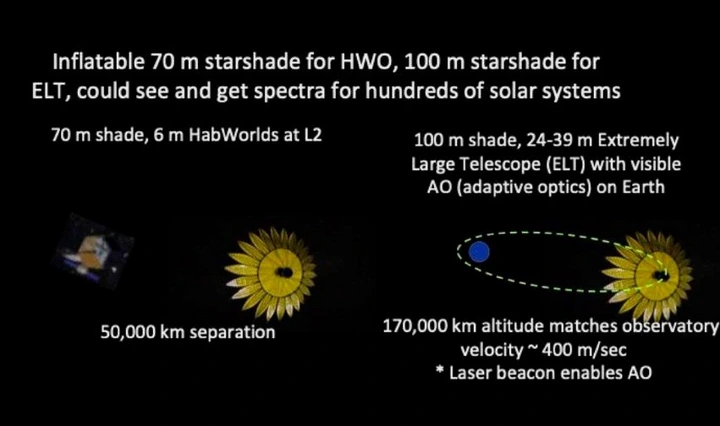Inflatable Starshade for Habitable Exoplanets

View pictures in App save up to 80% data.
John Mather
NASA Goddard Space Flight Center
We will design the first family of ISEE’s (Inflatable Starshade for Earthlike Exoplanets) with sizes from 35 to 100 m diameter. A starshade would enable any telescope to observe exoplanets, a top priority for astronomy worldwide. Compared with other starshade concepts, we aim for a lower mass, cost and complexity, while still providing high performance and science yield (>100 targets). Our starshades would be compatible with the 6 m diameter Habitable Worlds Observatory (HWO) now being planned, as well as the world’s largest telescope, the 39 m diameter European Extremely Large Telescope now being built in Chile, working as part of the HOEE, (Hybrid Observatory for Earthlike Exoplanets), and other future telescopes. We need to observe oxygen at visible wavelengths and ozone at UV.
An ISEE, positioned between a target star and the telescope, would block the starlight without blocking the exoplanets. Starshades have perfect optical efficiency, they work with any telescope, and they can block the starlight much better than the requirement, for a star >1010 times brighter than the target.
The alternative technology employs an almost flawless and highly stable space telescope, similar to HWO, equipped with an internal coronagraph designed to block starlight from obscuring the planet's image. Coronagraphs offer significant benefits, including their compact size, ease of testing, and immediate availability. Nonetheless, existing coronagraphs have yet to achieve the necessary contrast levels. Additionally, the development of an ultraviolet coronagraph remains unfeasible. If the stringent requirements for extreme picometer stability and optical precision of HWO and its coronagraph could be eased by integ